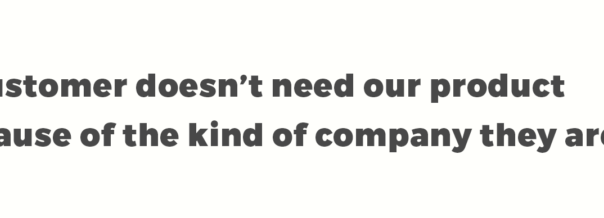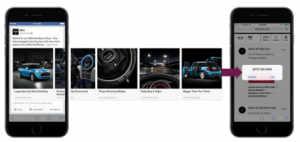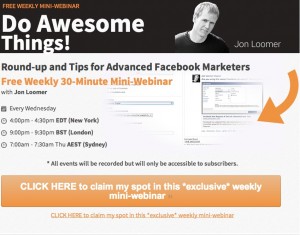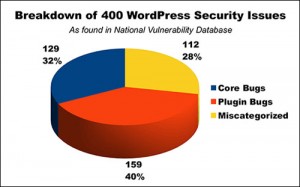At Growbots, we came across the Jobs to be Done (JTBD) framework more by accident than on purpose. Despite that, it has become, in our eyes, the best and most actionable way we have found to define our customers. Our need to do so started back when we were a lead generation agency. We had developed a targeting document through trials and errors. This had worked for a bit but then we ran into a wall.
- There were not many prospects left who met our targeting criteria.
- The value of the clients was static, we couldn’t make bigger deals.
- We couldn’t jack up our conversion rate above 7%.
In order to keep generating leads, we needed to find a new way of targeting prospects.
And this is when we had an epiphany. We had been targeting all wrong and been leaving money on the table as a result. You see, when we used to think about targeting, we were looking for the customers who we had been able to sell to in the past. We had then tried to find customers who had similar characteristics, be it operating in the same vertical, from the same region, or with the same number of employees. We assumed that similar companies to those that already became our customers would have similar needs and make similar decisions: specifically, they would buy our product.
What we completely missed is that two people in radically different companies can face the same problem and they can solve it in the same way with the same outcome. Rather than focus on similar kinds of customers, we started focusing on similar kinds of solutions. And that is where Jobs to be Done comes in.
With Jobs to be Done, we can describe the exact situation when our customer needs us
After all, a customer doesn’t need our product because of the kind of company they are. They need our product because they reached a pain point that they need to deal with.
Jobs to be Done helps you understand who you can help most and how to be appealing to them. You can use JTBD to:
- Identify the situation where your solution helps the most
- Predict the outcome that your customers want to get from using it
- Predict which customers are in a situation that you can help them with
- Convince your customers that you are the best solution to solve their problem
These are all the things that you need to do to be successful at outbound sales. In fact, you can use Jobs to be Done to improve your outbound results in just three steps.
Step 1: Find out what job your customers hire your product to do
Step 2: Turn your research into a job story
Step 3: Use your job story to create targeting documents essential to outbound sales:
- ICP for targeting your prospects
- Buyer persona to personalize the messages you send
Step 1: Find out what job your customers hire your product to do
Your customer “hires” your product to solve a problem that they have. This is best explained by the Milkshake story that Clayton Christensen, one of the originators of the Jobs to be Done framework, famously gave. It is up to you to find out what jobs your product does for your customers.
Don’t expect these jobs to be obvious or what you intended them to be. Intercom famously designed a map to show where people were engaging with their customers from. It turned out that what was supposed to be a cool throwaway feature was being used very seriously to show off the global breadth of the companies who used it.
The question then becomes: how “Can I find the information I need to find out about jobs to be done?” The Innovator’s ToolKit provides a great framework which can be adapted to B2B outbound:
- Look at your current customers
- Define your competition and find out what jobs their customers need to be done
- Define the customers you want and analyze the jobs they need done
- Talk to everybody who has contact with the customers
- Conduct interviews to find specific JTBD
- You can use these basic questions from the American express institute but if you want to go deeper, you can check out this set of interview questions tailored for SaaS products
Step 2: turn your research into a job story
A job story is the simplest way to express your job to be done. It can be expressed by this simple format:

- “When…”
- Describes situation where the customer needs your product
- “I want to…”
- Describes the action your customer wants to take
- “So I can…”
- Describes the outcome your customer wants
Example:
When I need to furnish my office, I want to be able to move workstations easily, so I can change the arrangement of the office whenever I need to.
Step 3: Use your job story to create targeting documents essential to outbound sales
Build an ideal customer profile or ICP for targeting your prospects
An ICP is a representation of the kind of customer you want to sell to or as Steli Efti says, “It’s basically a description of a fictitious organization (company, government agency, non-profit organization …) which gets significant value from using your product/service, and also provides significant value to your company.”
Your ICP is important for outbound because it gives you the criteria which can be easily imputed into prospecting applications. Essentially, you create a super targeted market segment. This is important as market segments have a long history of getting results. As Wendell R. Smith wrote, “Success in planning marketing activities requires precise utilization of […] market segmentation as components of marketing strategy.”
In other words, you only have a limited number of resources with which you can attract customers, so spend them on the customers who will give you the most back for your efforts.
The criteria you use is specific to your job story, not a particular set of criteria that everyone must follow. That being said, these frameworks can provide you with criteria that you can use: our ICP framework, Setli’s ICP framework, and the one created by Lincoln Murphy. You can mix and match the criteria depending on what is important for defining your customer.
The most important thing is to focus on the situation (the “when”) of your job story. When you do this, find which criteria match companies that get into the situation that you solve. The prospects you find do not represent all of the people you can sell to, just ones you know you can successfully target.
Define a buyer persona to personalize the messages you send then
Your buyer persona is a list of specific pain points and motivations of the person you write your message to, along with the jobs that you do for them. It still serves a role in messaging but should be informed by your job story. As Intercom’s Matt Hodges, a major proponent of applying Jobs to be Done to lead generation, says, “You are going to have different personas that are going to hire your product for a job, but they’re going to talk about it in a different way.”

After all, a CEO and a specialist might have different pain points and jobs that they need to be done. In fact, you can use the information from your job story and job story research to build your buyer persona. To do this, find out what kind of person fits the pain point, solution, and outcome. Like with your ICP, you can include whichever criteria are important for messaging.
Your targeting documents will be useful for all of your lead generation channels. To help you decide which one to develop, check out our post about which channel is best for your business.
Business & Finance Articles on Business 2 Community
(137)
Report Post






